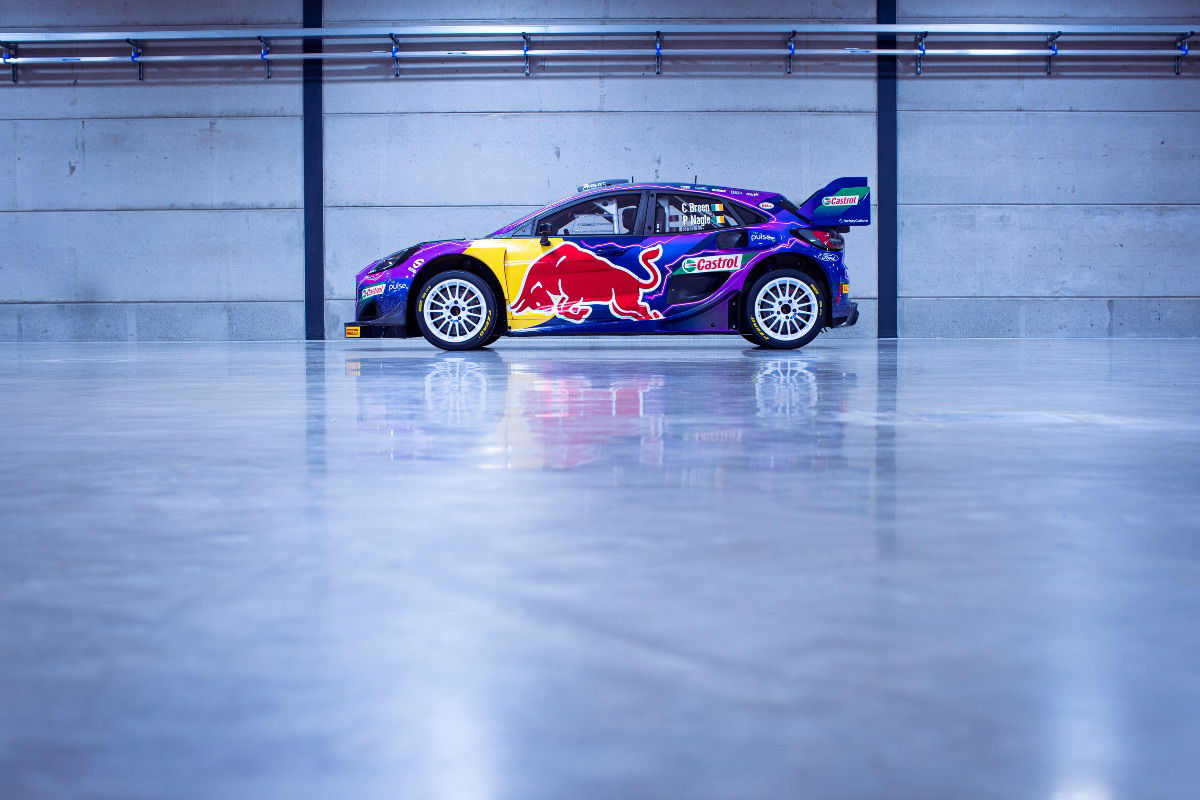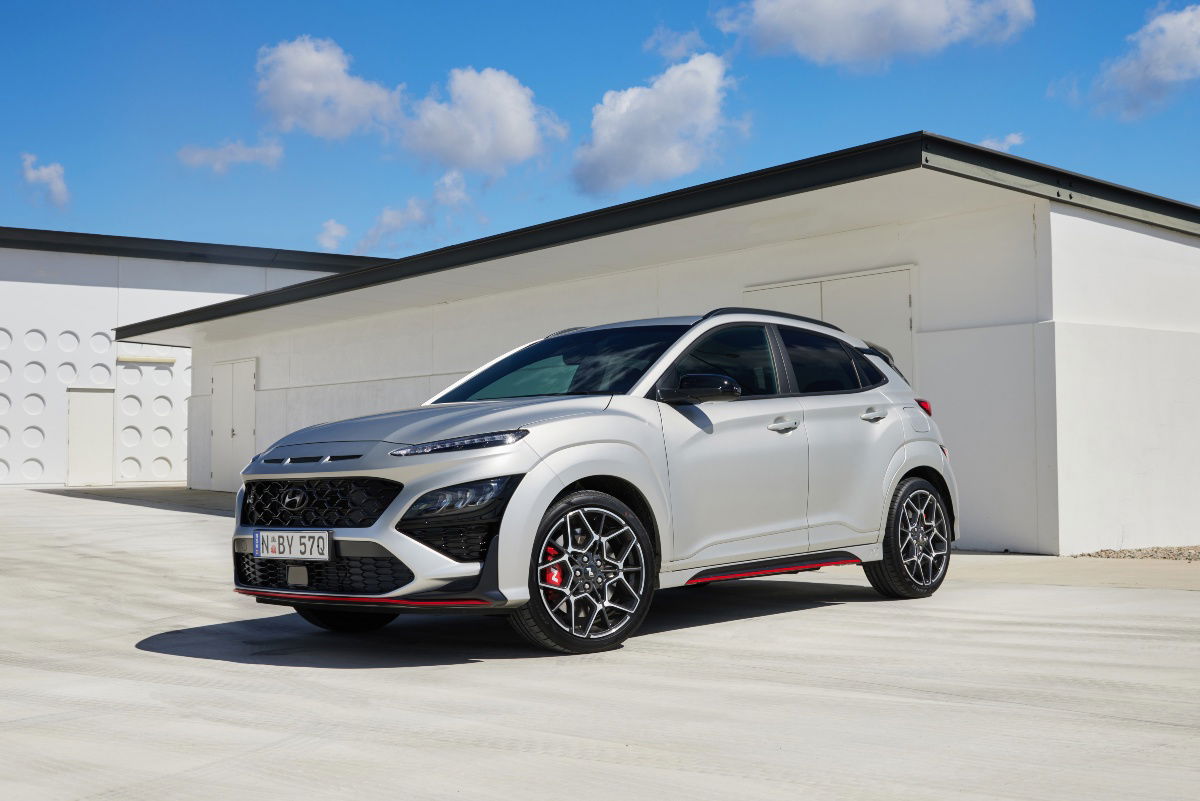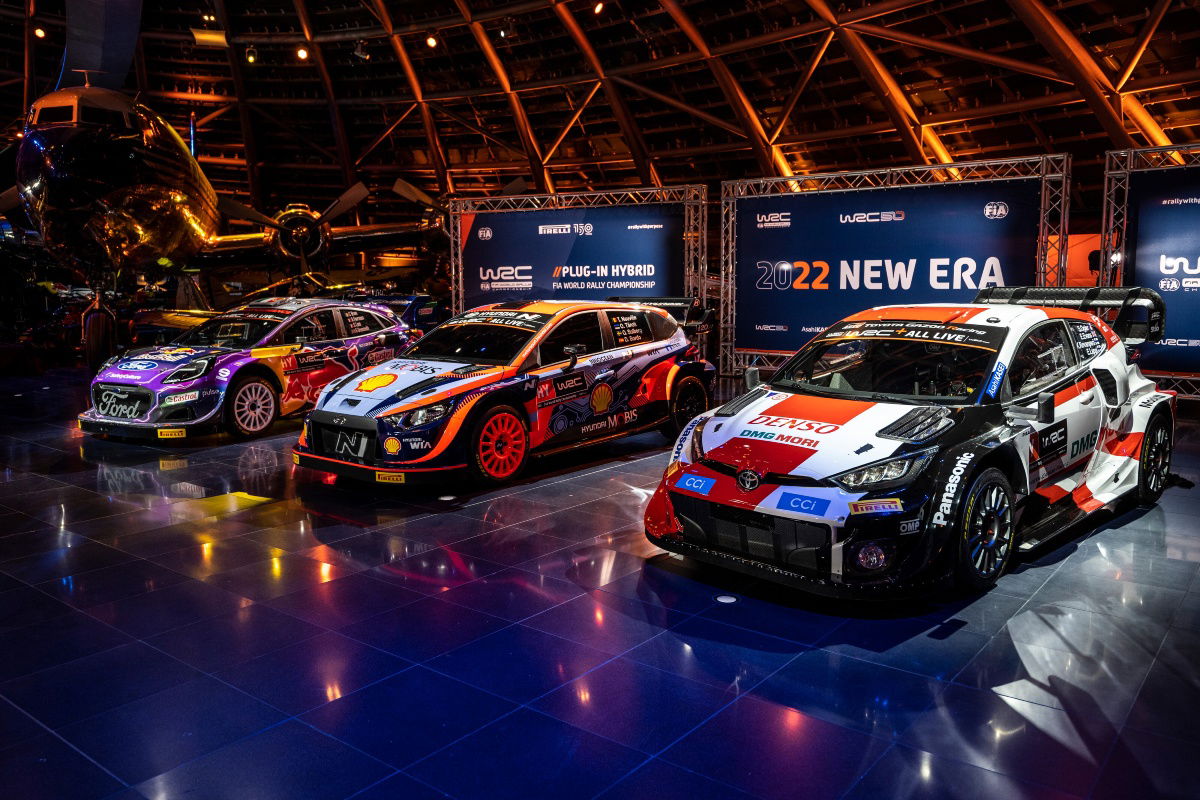
The 2022 World Rally Championship ushers in a new era for the sport, introducing new hybrid regulations designed to make the sport more relevant.
It comes as newly-installed FIA president Mohammed ben Sulaymen made attracting new manufacturers a priority for his tenure, saying that “two and a half manufacturers” isn’t enough for such an important championship.
READ MORE: 2022 WRC season launch reveals all three Rally1 machines
That was meant as a reference to the fully-fledged efforts for Toyota and Hyundai while Ford has a partnership with British rally squad, M-Sport, for its WRC program.

Despite not being an in-house factory effort, Ford’s 2022 Rally1 car potentially opens up a new avenue for the WRC that could be a boon for the series. That’s because Ford has ditched the Fiesta as the basis for its Rally1 challenger, instead using the Puma compact SUV.
Given the popularity of small SUVs and the decline of small hatchbacks – the type of cars that have been the basis for the WRC for decades – the arrival of the Puma got us thinking about some other new models that would be good as a future WRC entry.
Few other categories are as well placed as the WRC to promote these types of crossover models, which are equally popular with customers and manufacturers alike. So leaning into a potential SUV future could be just what the WRC needs to attract new brands – or lure old ones back.
Hyundai Kona N

The South Korean brand’s decision to stick with the i20 hatchback for its Rally1 entry made sense – until Ford revealed the Puma. Hyundai introduced the Kona N hot SUV in 2021, and using it as the basis for its new WRC weapon would have been a savvy marketing choice.
The Kona N is an impressive hot hatch alternative and still has the added ride height that makes an SUV so appealing to new car buyers. Having it as the brand’s WRC entry would have helped draw a clearer connection between the work Hyundai’s N division does on the road and special stage.
Mitsubishi ASX

With the revival of the Ralliart performance brand the timing seems ideal for the Japanese brand to return to the sport it once dominated.
While it would be great to see the Lancer Ralliart return, given its success during the WRC’s Group A era, Mitsubsihi is unlikely to revive the small car anytime soon.
Which makes the compact ASX the most suitable model in its line-up, given it’s Mitsubishi’s answer to the Ford Puma. Given the relative freedoms of the Rally1 regulations, the ASX would provide a suitable platform for a turbocharged, hybrid all-wheel drive WRC machine.
Volkswagen T-Roc R

The German giant would need to reverse its self-imposed motorsport ban, but the WRC would provide the ideal platform to promote its new range of R-badged, high-performance SUVs. As we’ve written previously, 2022 will see the introduction of the Tiguan R and Touareg R but the most appropriate WRC entry for VW would be the compact T-Roc R.
This is another in-market rival for the Ford Puma ST and Hyundai Kona N, making it the best choice for a new WRC era that would cater to the growing ‘Hot SUV’ market.
Mazda MX-30
While there are plenty of brands with WRC history that would make a good fit (Peugeot, Citroen, Fiat, etc), attracting a new manufacturer would be a major boost for the sport and the FIA president’s ambition.
Mazda is an obvious choice because the Japanese brand is a marketplace rivalry with Toyota, Hyundai and Ford, and the WRC could dovetail nicely with its green car initiatives on the road. Its hybrid MX-30 compact SUV could be a nice fit with the Rally1 rules and would help give a brand with the ‘Zoom-Zoom’ marketing line a high-level motorsport program to back that slogan up.
Subaru WRX

Sure, it’s not an SUV but any die-hard rally fan would want to see the WRX back in the WRC. An all-new model is arriving in 2022, so the timing is perfect for Subaru to reconsider its decision to quit the sport back in 2008.
The new WRX retains the same formula as the original, which was actually created during the WRC’s Group A regulations which required a road-going equivalent of the rally model. That means it’s still powered by a turbocharged engine and has all-wheel drive – both fundamental elements of the Rally1 rules.













Discussion about this post